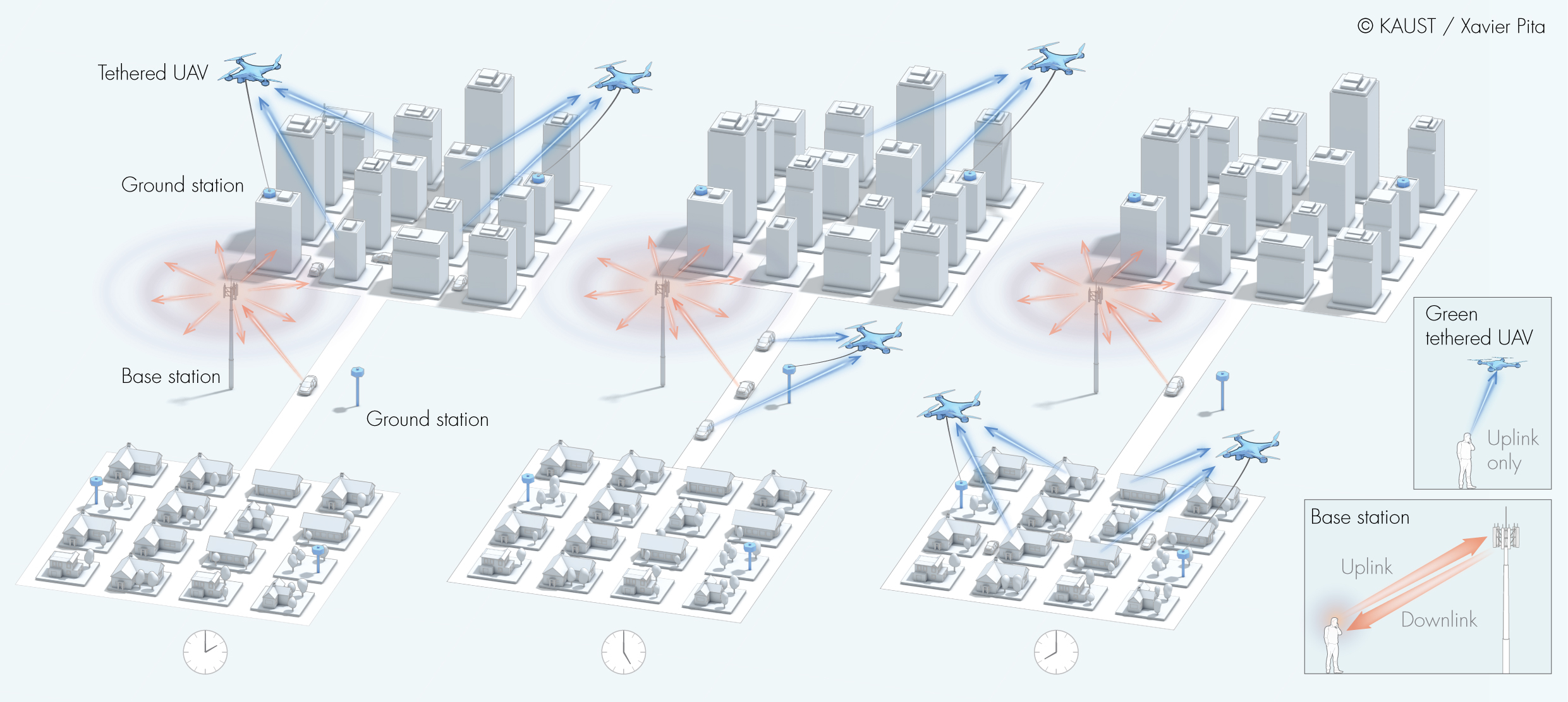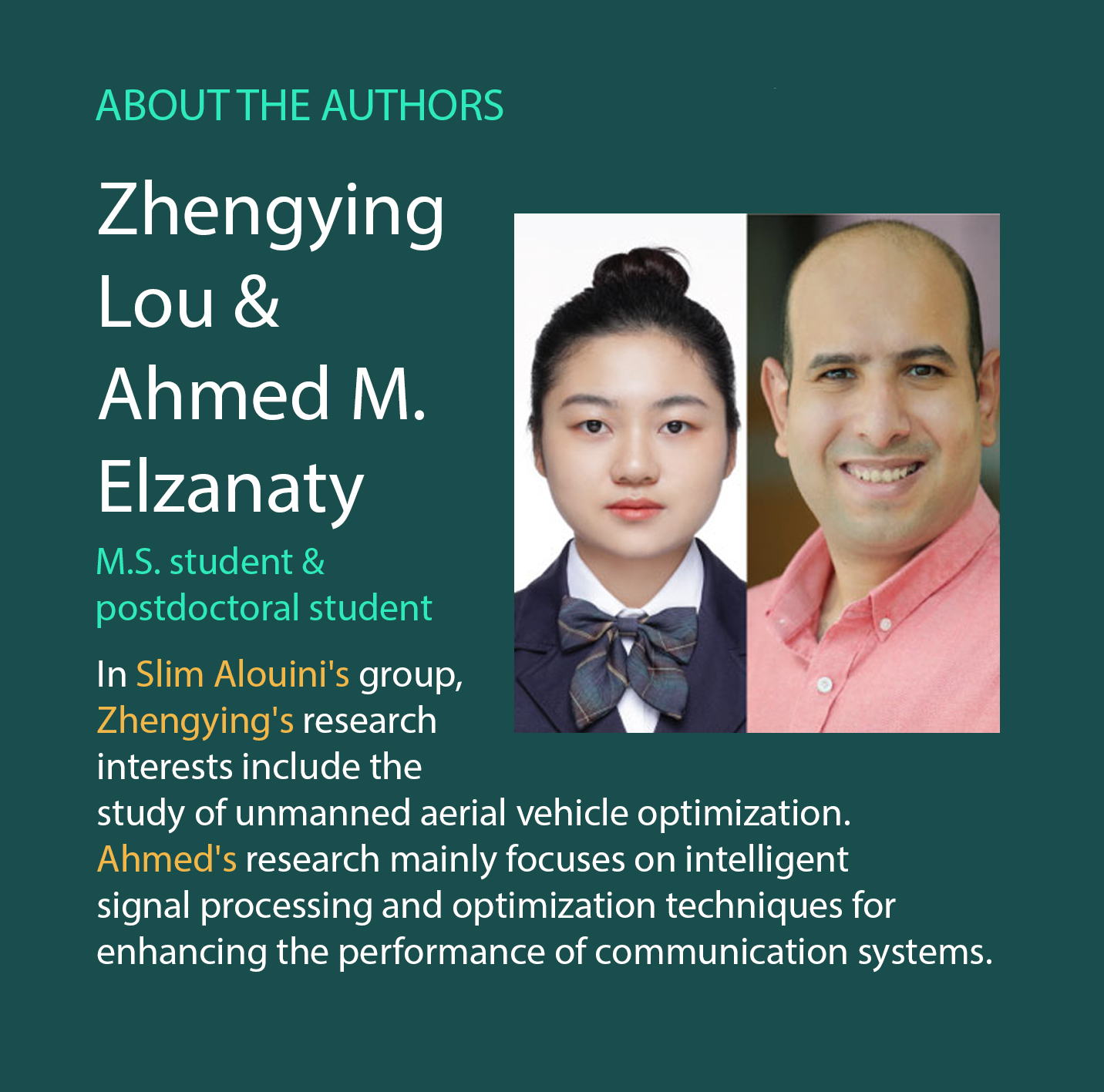Airborne antennas to address EMF concerns


Tethered unmanned aerial vehicles equipped with cellphone antennas could offer faster and more environmentally friendly coverage than that provided by fixed-base stations. Photo credit: KAUST / Xavier Pita
A solution has been proposed by masters student Zhengying Lou, postdoctoral student Ahmed Elzanaty and Distinguished Professor Mohamed-Slim Alouini of KAUST to address the widespread public concern about EMF exposure from mobile networks.
"It is mainly a problem of perception," said Elzanaty, "but this concern has led to attempts to destroy signaling towers, especially those associated with the 5G network." He did point out, however, that recent experiments on animals link some adverse health impacts with long-term exposure to EMF, although at higher intensities than those produced by cellphone networks. Given the widespread public concern, tackling this issue might be commercially and reputationally advantageous for mobile signal providers.
Elzanaty said that, although most public concern focuses on exposure to EMF from network base stations — the towers located on high buildings and dotted across the rural landscape — the EMF exposure due to the radiation from mobile phones can be much higher than that from base stations. The team proposes that their tethered unmanned aerial vehicles (TUAVs) would act only to receive these signals, reducing users' uplink exposure (the exposure from the mobile-to-base station).
They suggest a network of ground stations on the top of buildings in urban environments, providing both power and broadband data links to the TUAVs. The ability to move the TUAVs on demand would allow them to reduce the required power from mobile phones by being closer to these phones and also to adjust their position during the day to match the changing patterns of user movement. The regions covered by cellphone signals can vary significantly at different times of the day as commuters surge into city centers and return to their homes in the evening.
"Although the TUAVs would be closer to the users than the base stations, they would employ existing technology of low power 'green antennas' that only receive signals and so do not radiate any EMF," Lou emphasized. The system also offers significantly increased data transfer speeds.
The team has already applied for a U.S. patent for their proposal and its computer control algorithm. They believe it could have significant commercial potential.
"While research into possible risks of EMF exposure continues, our novel airborne green antennas-based architecture could allow the race towards new 6G mobile systems to continue while decreasing the exposure to EMF," Elzanaty concluded.

KAUST authors Zhengying Lou, M.S. student, and Ahmed M. Elzanaty, postdoctoral student. Photo: KAUST

